This article is a guide on how you actually go about planning an expedition.
It’s easily the longest and most detailed blog post I’ve ever written. It will form the basis of a book next year so please do enjoy it while it’s free.
[divide]
Introduction
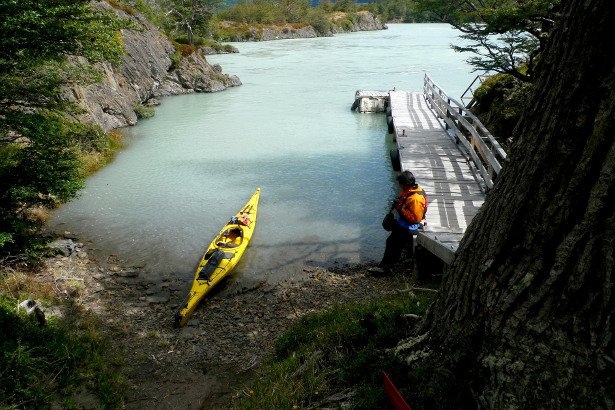
When I posted a question on Facebook about how to plan an expedition, the responses that came back tended to involve pubs and the back of an envelope or fag packet.
There’s a lot of truth in that. Great ideas are often the result of late night dreaming and scheming, and they’re pulled off despite a lack of planning, not because of it. For those that work that way, that’s great. My own trips have often been like that.
But for those that have never done something like this before, saying ‘it’ll be alright, you don’t really need to plan anything’ is likely to have the opposite effect to the one intended. Equally, for every person that wings their expedition, there will be others who quietly plan theirs quite thoroughly.
This article attempts to set out what you might do in an ideal world. The steps you’d take if you had as much time as you needed. Many of the steps won’t be necessary for everyone, lots will get neglected and some you can just get away without doing at all.
But, if you’re at all unsure where to start or feeling a little daunted by the prospect of planning a big adventure, then having an exhaustive check list is often a good way to reassure yourself. The more you do, the easier things tend to beecome so just get stuck in.
The following topics are covered:
- Research
- Budgeting
- Transport
- Visas
- Insurance
- Training, Fitness & Diet
- Equipment
- Communication
- Planning
[divide]
How To Have An Adventure
How To Have An Adventure
This article is part of the ‘How To Have An Adventure’ series:
- Why having an adventure might be easier than you think
- How to have an adventure without any money
- Where to get ideas and inspiration for an adventure
- How to actually start planning the logistics of an expedition
- How to get sponsorship for your expedition
- The secret to making sure your expedition definitely happens
[divide]
1. Research
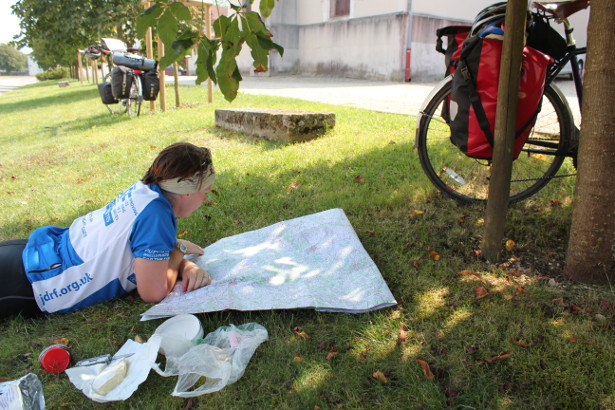
The first thing I like to do when planning an adventure is some research. Punching in key words to a search engine is by far the easiest place to start so do that first. There are, however, lots of other really useful resources that I would recommend:
1. The Next Challenge Expedition Resources
I’ve spent years building up a huge bank of expedition resources on this website and they are all free to access online.
They include pages on big topics like polar and desert expeditions, ocean rowing and mountaineering; sporting adventures such as running, outdoor swimming and cycle touring; and more niche topics ranging from hitch-hiking to skateboarding.
I’ve also written a series of ebooks which you can download on similar topics such as how to get to the north pole, row an ocean, climb an unclimbed mountain and cycle around the world.
2. RGS database of expedition reports
Geography Outdoors at the Royal Geographical Society has a big database of expedition reports stretching back decades. It’s particularly good for climbing expeditions and scientific field research.
3. Expedition websites
These days, lots of people who do expeditions set up a website for the occasion and maintain a blog. They can be a fantastic resource when it comes to planning your own trip. Just start searching on Google.
I’m hoping to go to Jordan later this year so have been reading through Leon McCarron’s blog from Walking the Masar and, in the past, Ben Saunders’ blog was really useful when researching polar stuff.
Most of these blogs will have contact details and people often like talking about adventures past. Just be sure you’ve put a bit of effort into doing your own research before asking something that could be answered by Google.
A particularly good example for expeditions in general is the Explorers Connect website.
4. Expedition events and festivals
There are a range of festivals and events that exist to bring like-minded, adventurous souls together. They can be a fantastic place to get information about whatever it is you’re trying to achieve.
Some examples include: the Cycle Touring Festival, Base Camp Festival, Yestival and the Adventure Travel Show. Explorers Connect organise regular meetings in various cities around the UK and events like Tales of Adventure and Night of Adventure can also be a good place to meet experienced or aspiring adventurers.
Finally, the RGS Explore Conference, held in London each November, is a weekend entirely devoted to planning expeditions. It’s expensive but there are few better places to go if you want to get your expedition off the ground. I’ve used the conference to help plan various trips but it was particularly useful when planning a polar trip: where else can you find a room full of people who’ve been to the north/south poles and are giving their time to help you do the same?
5. Sporting bodies
Many activities have representative organisations that can be useful sources of information. Climbers have the British Mountaineering Council and Mount Everest Foundation (BMC and MEF) who were fanastically helpful with my climbing trips, particularly in locating areas of unclimbed mountains in Siberia.
Swimmers can make use of the Outdoor Swimming Society where a large body of experienced swimmers are waiting to share their knowledge (and opinions). Their Facebook page is particularly active. Cyclists have the Cycling UK (formerly the CTC) and Adventure Cycling Association with their regular magazines and helpful staff. Similarly, the Cycle Touring Festival – organised by my wife, Laura – is fast becoming a hub for cycle touring knowledge.
4. In-country contacts
Sometimes there is no better way to find answers than to speaking to somebody in the country you’re planning to visit.
If there are expedition or travel companies that organise trips where you’re going then drop read their websites or try contacting them. You’ll need to be mindful that they’re trying to make a living from what they do. It might be that you pay a small fee for their help or you hire them to do a bit of organising for you. Or it might be that they’re happy with a mention on your website or expedition report.
For my climbing trips, I’ve always had some form of in-country support, usually arranging transport into the mountains and sorting out the necessary permits.
However, if you’re going somewhere particularly obscure, there may not be any such companies. That was the case when I was helping Sarah Outen get across Sakhalin island in the Russian Far East. What opened a door for me on that occasion was the CouchSurfing website. Pretty much every country in the world has Couch Surfing hosts: people who live there, have an interest in travel and actively want to help other people. For Sakhalin, I just sent a few messages asking if anyone knew any kayakers and it worked.
There’s a similar network for cyclists called WarmShowers.
6. Books
Finally, don’t forget the power of a good, old fashioned paperback (or electronic equivalent). Travel guides like Lonely Planet may not specialise in really getting off the beaten track in the expedition sense but they are still fanastically well researched documents. You can often just download a particular chapter for a few pounds.
Alternatively, have a look on Amazon for anyone who’s written a story about doing something similar. It may not be a practical guide but you’re bound to pick up tips. I read loads of books about cycling around the world before I did it myself.
[divide]
2. Budgeting
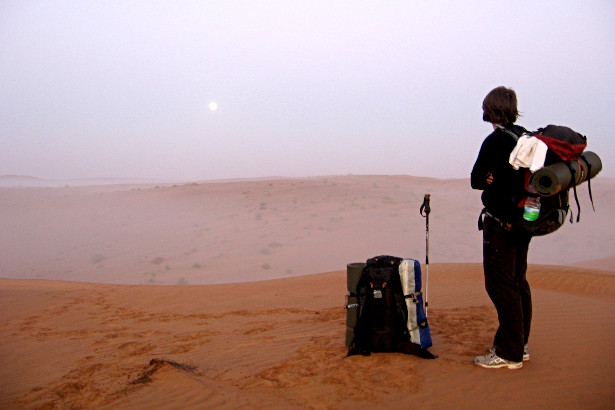
You may want to plan some form of budget for your trip. This could range from a few scribbles on the back of an envelope to a detailed spreadsheet. I’ve used both ends of the spectrum.
Plenty of smaller, shorter, simpler trips won’t require any form of budget. For the weekends my wife and I spent running the Tube and crossing the Wahiba Sands desert, for example. Similarly, for one or two week trips like cycling across France or walking in Iceland, we looked at the cost of any trains, planes and hotels but didn’t plan any more beyond that.
Going on ‘an expedition’ is not necessarily any diferent from planning a weekend away or a week’s holiday. If you’re the kind of person that does a spreadsheet for their holidays then do the same for your expedition. If you’re not then there’s no particular reason to do so now unless it’s particularly complicated or others are relying on one.
Three examples of when you might consider using a budget are:
1. Budgeting for a big expedition
We spent 16 months cycling around the world and Laura set up a reasonably detailed spreadsheet in Excel for it. That was because we knew we had a finite sum of money and wanted to know how far it would get us. It included columns for both forecast costs (e.g. the price of a visa or an estimate of an internatonal flight) and actual costs once they were incurred. It helped us budget for the trip as a whole and budget for specific countries. If we had set aside, say, £200 to get across Iran, then we could work out how much we could spend each day.
For such a long trip, it was really helpful. I’d do the same if we went again but, equally, I can imagine that plenty of round-the-world cyclists did no such thing!
View our round-the-world cycling budget here
2. Budgeting for a group expedition
I organised a six person climbing expedition to the Russian Altai mountains and made a simple budget on Google Sheets for it. Because there was a group of us, all living in different parts of the country, I used it mainly to keep track of costs incurred, who’d paid for them and who owed what to whom. It wasn’t complicated but it meant tallying up the costs at the end was easy.
3. Budgeting when applying for sponsorship
If you’re asking other people to give you money, it’s only fair that you show them how it’s going to be spent. Even though it can seem like a chore, it’s usually a useful exercise and can really make you think about what the costs are actually going to be.
I’ve read many great adventure ideas from people who’ve applied for my grant then read their budget and been instantly put off by the amount they’re asking for. Think about what’s going to stand out in your budget and what’s reasonable to ask.
I’ve created expedition budgets solely for the purpose of applying for grants many times. One example is from travelling around the world using eighty different methods of transport, a trip for which I won an grant from my university.
How do you actually make a budget?
If you need a budget for your trip then I’d recommend either Excel (or its free equivalent, Calc, in Open/Libre Office) or Google Sheets which is free to use.
Have a look at my three examples above. The 80 Ways budget is just a list of money coming in (e.g. grants, sponsorship and savings) and money going out (e.g. flights, visas and hotels). Start with that format and only make it more complicated than that if you really need to.
For an example of a more complicated budget with formulae and automatic calculations, look at our round-the-world cycle budget.
[divide]
3. Transport
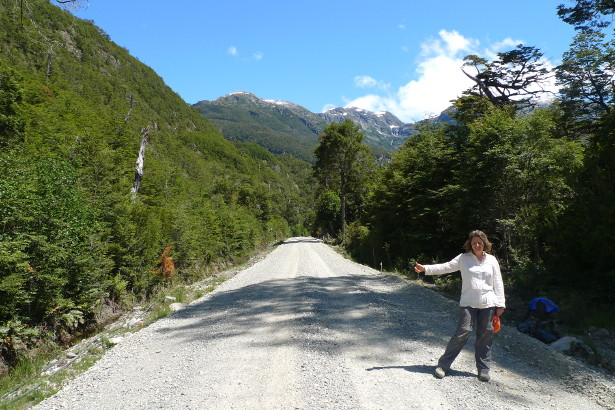
Booking flights
If you need to book a flight for your trip then, personally, I use the website Sky Scanner. Several adventury colleagues use Kayak. They both do essentially the same job of scouring lots of different airlines and websites to find the best price.
There are usually so many variables and permutations then I feel the need to create a spreadsheet to compare all the options.
Arranging transport in-country
Potentially more complicated than booking flights is arranging transport within the country you’re visiting. Your options include:
- Using a local agent or travel company. Often the easiest method but expect to pay a little extra. You can find them on Google, forums, WikiTravel or guide books like Lonely Planet. This is what I’ve done for my mountaineering trips to Russia, Bolivia and Kyrgyzstan. The same people that arranged our permits, arranged the transport for us too.
- Trying to book directly. This can be particularly hard if you don’t speak the language and/or you’re going to a country where reservations and advanced bookings are not the norm or even possible. Finding someone that speaks the language (or trying Google Translate if not) may help or, even better, making contact with someone that lives in the country and knows the system. Forums like Lonely Planet Thorn Tree are a good place to start for research and the CouchSurfing website may help you find a local.
- Waiting until you get there. Some things are much easier when you’re in the country. What could take hours of research online may be solved in minutes once you’ve arrived. If you’re on a tight time frame then you may need to have everything planned and booked in advance. But if not, this will often be your best bet. On my trip ‘around the world in eighty ways‘ – an adventure almost entirely spent on public transport – we only made one booking before leaving home and did the rest as we went. It involved a few stressful negotiations and the odd delay or extra expense but we never came unstuck.
[divide]
4. Visas
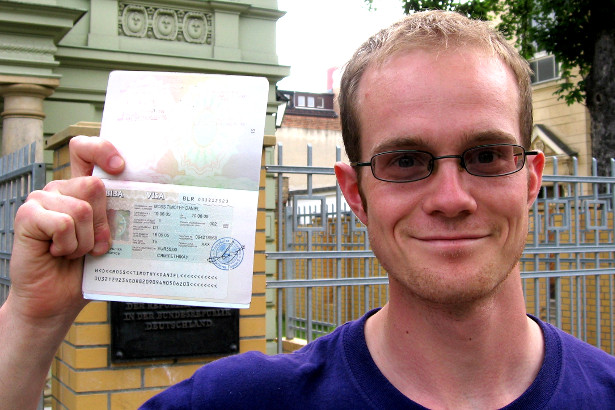
Visas are one of the most common things that I get asked about. I think there’s a little mystique around them and people often worry that they are more complicated than they really are. But if you leave yourself plenty of time then they are usually quite straightforward.
The problem with visas is that there’s no universal system for getting one. Every country has its own method which is rarely well communicated and frequently changing. This makes the process confusing and offputting. But the more you dig, the easier it becomes.
This is my advice…
Steps for finding out visa requirements
- Google it – you’ll often find useful advice or a guide to applying to that particular country.
- Check the Lonely Planet Thorn Tree forum – a really good place to get the latest information from normal people who’ve been through an application recently.
- Check The Visa Machine website – it’s a commercial operation but they have a tool which is quite good for a quick check (thanks to Leon for the tip)
- Visit the country’s embassy website – most countries will have a website for their embassy with details about their visa requirements. I’ve deliberately left this until step three because they are often not that clear so sometimes it’s better to get an explanation elsewhere first.
What to check for during visa research
The key to making visa applications easy is planning ahead. Almost every visa-related headache I’ve experienced has been as a result of not leaving enough time.
Here’s what you should check in advance:
- Can you get a visa upon arrival or do you need to apply in advance? If it’s the latter then this will likely mean visiting the country’s embassy in person or arranging to send your passport by post. For the countries issuing visas on arrival, a few require you to register online before you arrive.
- What paperwork do you need? It’s usually just your passport and a couple of photographs but some countries have additional requirements such as an itinerary for your trip, an address for where you’re staying, bank statements or even a formal invitation. These bits of an admin are usually straightforward given time and notice but can be a real headache if you leave it until the last minute.
- How long will it take? Some embassies will issue visas on the spot, others will take several weeks. Sometimes it’s quicker if you pay more. The length of time it takes becomes more complicated if you have to travel a long way to the embassy to deliver and then collect your passport, and doubly so if you have multiple visas to obtain. Again, plan ahead. It’s also possible to pay a company to get a visa for you which usually saves you time and effort but costs more.
Thanks to Emily for much of this advice.
Visa resources for specific countries and regions
Here are a couple of specific recommendations for paricular countries. I’ll build this list up over time so please do add a comment with any suggestions.
- Central Asia – Caravanistan for the latest information and Stan Tours for letters of invitation to e.g. Iran (thanks to Tom)
- Russia – Way To Russia for general info and letters of invitation
Plan ahead but don’t be put off
In summary, plan ahead and give yourself as much time as possible. I always intend to do this and rarely manage it. I still get my visas, I just have a little more running around to get them.
Finally, it’s worth noting that for most of us, there will be far more countries that don’t require visas than do. When we cycled around the world we visited 27 countries and only needed to apply for four visas in advance, two of which were done entirely online. The rest were just issued at the border.
Don’t ever let the fear of visas put you off doing a trip. Just follow the steps above and, before you know it, the bureaucracy will be over.
[divide]
5. Insurance
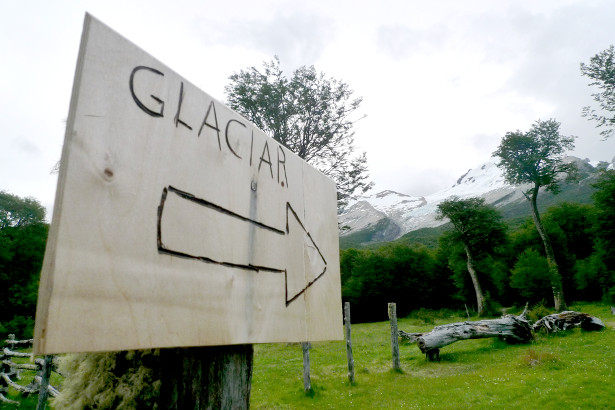
If you’re travelling overseas for your expedition then you will probably want some form of travel insurance.
Some things to consider are:
- Will normal travel insurance cover you? If so, that’s by far the cheapest and easiest option. This is what we did for walking in Iceland and cycling in France, and will no doubt do for our next trip hiking in Jordan.
- Is your activity covered by the policy? You often have to pay small premiums for more adventurous sports.
- Do you need evacuation cover? Only applicable if you’re going somewhere particularly remote e.g. mountaineering or Greenland.
- Do you need full travel insurance cover or will medical suffice? We did the latter when cycling across the US. We reasoned that our bikes and camping kit wouldn’t be insured if we were touring in the UK whereas medical expenses if something happened to us could be in tens, if not hundreds of thousands.
For more information on this, I’ve dedicated a separate article to expedition travel insurance.
[divide]
6. Training, Fitness & Diet
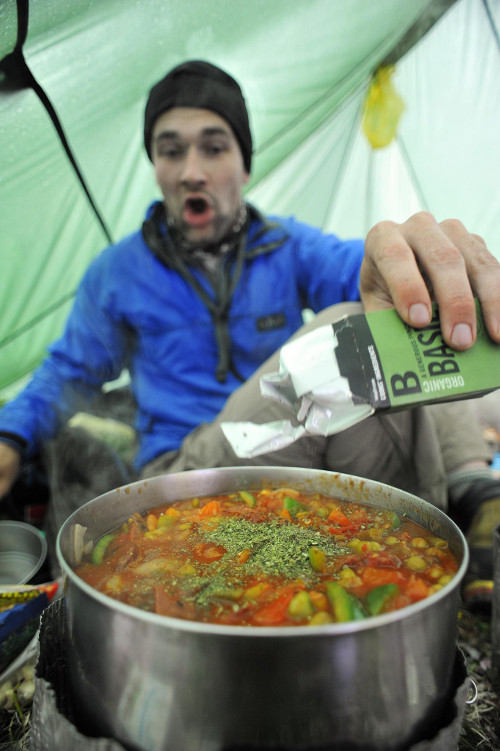
For expeditions that are particularly physical, it may be wise to do some training before you set off.
If you’re tight on time or have a specific physical goal then this will be more important. Otherwise, you may just want to do enough so that you can enjoy what you’re doing. That may mean doing a lot of exercise or it may mean that you’re already fit enough without doing anything extra.
Getting fit for an expedition
The best way to improve your fitness for any given activity is usually just doing the activity.
For a long walking trip carrying a rucksack over hills, doing exactly that on your weekends will be your best way to prepare. If you’re off to the North Pole then you’ll probably want to tie a heavy object to your waste and drag it over some large objects. And if you want to cycle around the world then there are few better ways to train than just riding your bike a lot.
If you’ve got lots of time and free weekends available then that will make things easier. But little and often is just as good and probably better than just doing something big once a month. Don’t underestimate how much you can fit in around your normal routines. Commuting to work with a heavy pack, getting up early to go for a hilly bike ride, hitting the gym at lunchtime… it all helps.
Personally, I rarely do much training for my expeditions, if any at all. I keep generally fit and perhaps do one practice trip (e.g. a weekend walk or bike ride as appropriate). The only challenge for which I’ve actively trained was my triathlon from London to the Isle of Wight which involved a three mile swim. I could barely manage three lengths of a pool at the start so spent a year learning to swim properly.
Before cycling around the world we did a week long tour in the UK. That was less about fitness and more to test out kit and check that we actually enjoyed the experience before we took the step of quitting our jobs.
What diet should you follow before an expedition?
I am often asked how I balance my nutrition on expedition and what kind of diet I follow when preparing for one. The answer to both questions is: I don’t.
Before a trip I eat normally and on a trip I eat whatever’s available. I don’t say this to be facetious, just to keep perspective. It’s easy to get carried away but expeditions are a long way from elite sport. Martin Strehl swam 3,00 miles down the Amazon powered by red wine, Elise Downing is running 5,000 miles around the UK eating cake for breakfast. I suspect more great adventure achievements have been fueled by seal blubber and super noodles than carefully mapped out diet plans.
A possible exception is if you are on a long trip of several weeks or months and are carrying all of your food (e.g. doing something polar). In such instances you would probably want to check you were getting enough calories, protein, vitamins and minerals each day. But, beyond that, I’d just enjoy being able to eat twice what you normally can and concentrate your energy elsewhere.
[divide]
7. Equipment
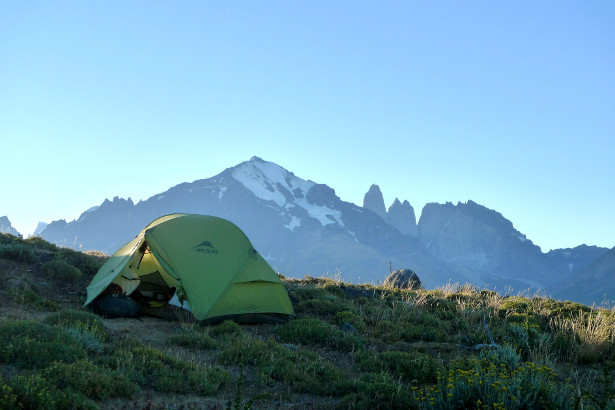
I’m a gear nerd and I love talking about kit. But I’ll keep this section brief because it’s a big broad topic that will vary hugely depending on what you’re doing. Antarctica requires a lot of kit whilst an ultra marathon just requires some comfortable running shoes.
Certain activities will always require some specialist equipment: mountaineering, ocean rowing and anything polar, for example. But for others you often don’t need as much fancy kit as you might think. We walked crossed a desert, for example, wearing old trainers and cotton shirts, camping in a £5 tent from the supermarket. And whilst there is plenty of expensive kit available for cycle touring, it can also be done for less than the price of a round of drinks.
Outdoors equipment can be expensive if you buy it all new off the shelves. There are quite a few ways in which you can save yourself money though and I’ve written a separate article all about it: Where to buy cheap outdoors kit.
If you want to read more about specific types of equipment then take a look my big gear comparison articles. I am always happy to answer questions too.
[divide]
8. Communication
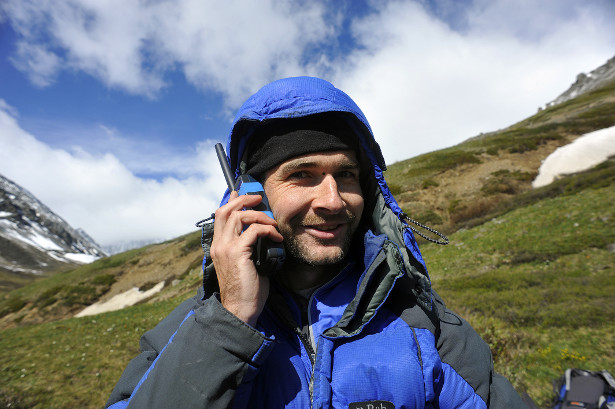
There are two main reasons someone might want to communicate with the outside world whilst on an expedition: safety and fun.
By the latter, I mean blogs, social media, newsletters and the like. They can all be great additions to an adventure but, because they’re not essential (and because I’ve covered them elsewhere), I won’t detail that stuff here.
Methods of communicating for the purposes of safety will likely use one of the following technologies:
Mobile phone signal
This includes calls, texts and data. Don’t underestimate the penetration that cell phone coverage has achieved (see here). I’ve found signal on the summit of a previously unclimbed mountain and all over far flung parts of Sibera.
If you’ve got phone signal then the world is your oyster. We all know what smartphones are capable of these days and even if they have limitations, you can connect a laptop into one and use it to get your computer online too.
Satellites
If you’re going somewhere more remote like mountain ranges, the poles, deep desert or deep jungle then the right satellite phone will give you signal anywhere in the world. Hiring one is usually simplest.
See my article on the different satellite phone options for details.
Radio waves
The final option is using radios. With the possible exception of boat-based adventures, these are usually only useful for communicating within an expedition rather than from an expedition back home.
For more details on communicating on an expedition, see my article How To Communicate From The Field.
[divide]
9. Planning
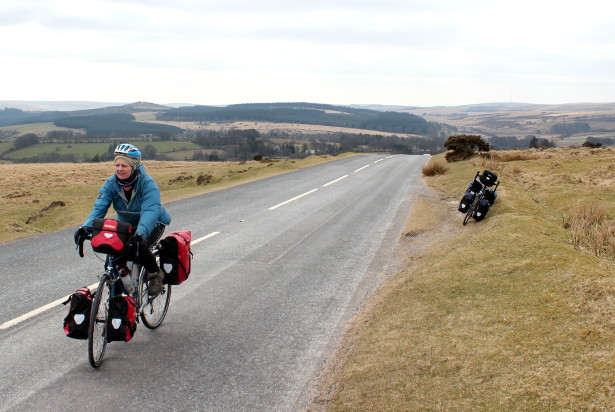
Above I’ve tried to cover off all the areas which you might want to consider when planning an expedition. For the actual act of process planning – keeping track of what you’ve done and still got to do – some suggestions include:
- Google Docs – I’m a big fan of this because I can check it from wherever I am and share it with others on the team.
- Google Maps/Earth – I find it really useful to visualise trips sometimes so being able to edit a map, mark on airports, campsites and places of interest is a great help. Many of my expeditions ideas have come from staring at a map. Google Maps is easier but Google Earth is better for remote stuff.
- PB Works – if you’re planning something particularly complex then this (free) editable ‘wiki’ is excellent.
- Pen and paper – scribbling stuff down in a notepad is often as good as anything else.
- Your own head – finally, if it’s just you and it’s not too complicated then don’t feel obliged to do anything clever. You can probably just remember it all yourself!
For more ideas and details, see my article on expedition planning software.
[divide]
That’s it. A step-by-step guide to planning an expedition. If you have any questions or there’s something I’ve not covered, please add a comment below.
[divide]
How To Have An Adventure
How To Have An Adventure
This article is part of the ‘How To Have An Adventure’ series:
- Why having an adventure might be easier than you think
- How to have an adventure without any money
- Where to get ideas and inspiration for an adventure
- How to actually start planning the logistics of an expedition
- How to get sponsorship for your expedition
- The secret to making sure your expedition definitely happens
What do you think? Please do add your thoughts below…